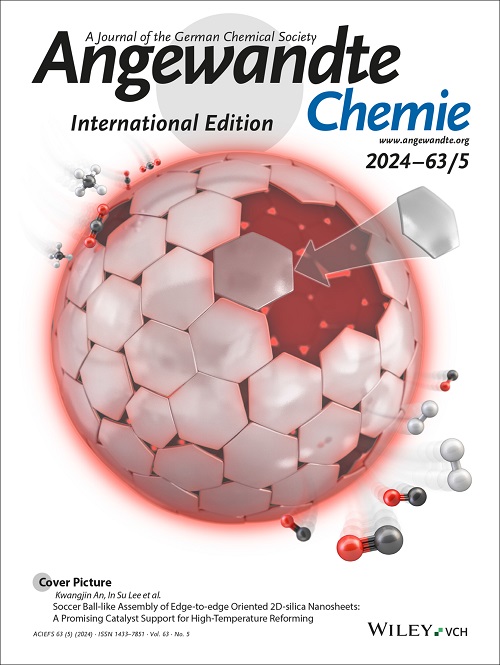Synthetic Reversible Fibrous Network Hydrogels Based on a Double‐Helical Polyelectrolyte
IF 16.1
1区 化学
Q1 CHEMISTRY, MULTIDISCIPLINARY
引用次数: 0
Abstract
The unique mechanical properties of fibrous networks in biological tissues have inspired the development of synthetic fibrous network hydrogels, yet few polymers can reversibly form such structures. Here, we report the first reversible fibrous network hydrogel composed of synthetic polyelectrolytes with extremely rigid conformation (persistence length is ~1 μm), made up of double‐helical poly(2,2'‐disulfonyl‐4,4'‐benzidine terephthalamide) (PBDT) and tetrabutylphosphonium bromide ([P4444]Br). The hydrogel exhibits a unique sol‐gel transition, triggered by the hydrophobicity increase of [P4444]Br above lower critical solution temperature (LCST). This drives PBDT aggregation into fibrous bundles through electrostatic interactions. These bundles grow and branch into a continuous network, with the molecular rigidity of PBDT’s double‐helix conformation being key to gel formation. The hydrogel displays strain‐stiffening mechanical responses akin to biological systems and shows a significant hysteresis (21 °C) between heating and cooling cycles. Uniquely, the effects of salts on the transition temperature deviate from the Hofmeister series, highlighting coordination with sulfonate groups as the dominant factor. Leveraging its modulus change during gelation, the hydrogel was successfully applied as a spray coating on superhydrophobic vertical Teflon surfaces. This study broadens the scope of thermoreversible hydrogels introducing gelation mechanisms for rigid polyelectrolytes and demonstrates their potential in advanced coatings.求助全文
约1分钟内获得全文
求助全文
来源期刊
CiteScore
26.60
自引率
6.60%
发文量
3549
审稿时长
1.5 months
期刊介绍:
Angewandte Chemie, a journal of the German Chemical Society (GDCh), maintains a leading position among scholarly journals in general chemistry with an impressive Impact Factor of 16.6 (2022 Journal Citation Reports, Clarivate, 2023). Published weekly in a reader-friendly format, it features new articles almost every day. Established in 1887, Angewandte Chemie is a prominent chemistry journal, offering a dynamic blend of Review-type articles, Highlights, Communications, and Research Articles on a weekly basis, making it unique in the field.

 求助内容:
求助内容: 应助结果提醒方式:
应助结果提醒方式:


